THE LAW OF THE FRAME
Jean-Pierre Gorin & Kent Jones
 FORWARD
FORWARD
 DOWNLOAD
DOWNLOAD
 ABSTRACT / KEYWORDS / ARTICLE / BIBLIOGRAPHY / ABOUT THE AUTHOR
ABSTRACT / KEYWORDS / ARTICLE / BIBLIOGRAPHY / ABOUT THE AUTHOR
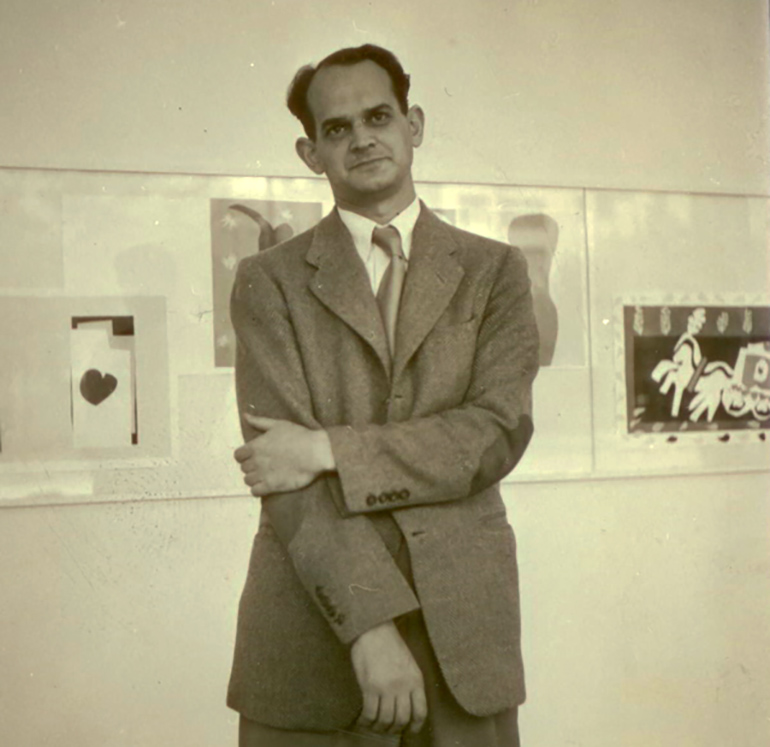
Kent Jones: Let’s start by talking about Manny in a contemporary context. I’m thinking of the Cahiers interview in the early 80s with Daney and Olivier and Bill Krohn, where he said, ‘I’m not interested in what The Man Who Shot Liberty Valance (John Ford, 1962) meant to Andrew Sarris in 1962, I’m interested in what it means in contemporary terms.’ So let’s pose the same question in relation to Manny’s writing. I don’t want to know how it felt to read it in 1970 when Negative Space was published – what does it mean now? And what is it in relation to the paintings?
Jean-Pierre Gorin: Well, one way to get the ball rolling is to start with this tagging that he got all his life – this ‘film critic’ that abandoned film criticism and became a painter. I remember him exploding about that. He said, ‘You think I’m a film critic? I’m a writer!’ He was full of venom.
KJ: He said that?
JPG: He said that.
KJ: That’s interesting – that he articulated it that way.
JPG: And he said that the style of the writing, the function of the writing, was not simply the nailing of the film now, in the same way that Sarris or Kael or all those people did or continue doing. He constantly affirmed that he had been a painter before he had been a film critic. But I think that this before-and-after in terms of Manny and his work misconstrues what’s really at stake—this kind of diagonal or transversal mode of thought. This guy was fluent in all sorts of idioms, and was constantly contaminating one with another. So that effectively, his saying ‘I’m not interested in what Liberty Valance means to Andrew Sarris,’ and this exigency of finding an anchorage in… he’s not interested in Toonerville Trolley as much as he’s interested in the speed of the hand or the line, and he’s interested in putting that in a relationship with certain types of writing or certain types of music. I don’t know what to call it.
KJ: In his class notes, he writes that he’s interested in what a work of art carries of the DNA of its time.
JPG: Yeah, that’s it.
KJ: Which goes against the dominant strain in film criticism, which is all about the person behind the camera and their themes and how they arrange light and space. So what he’s saying is that there’s that, but that artists are also a conduit for what’s happening beyond and around them—the impersonal. The unsayable.
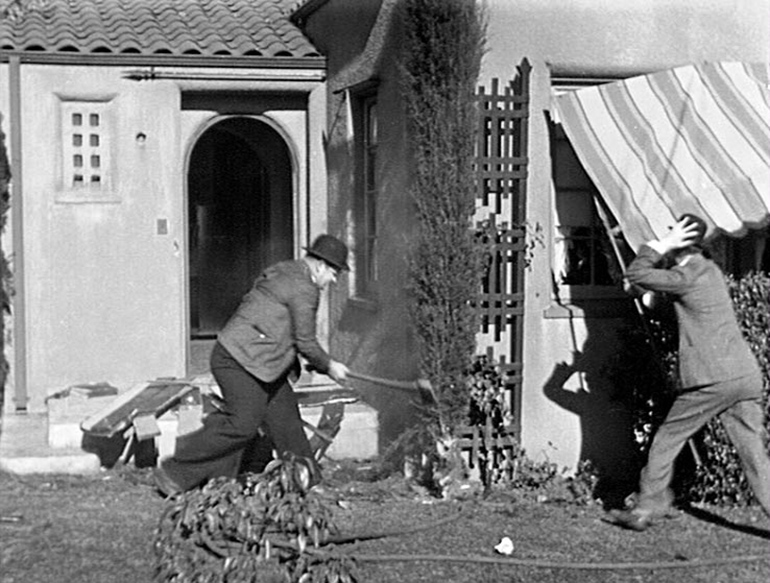
JPG: Yeah, at all levels, every time he looks at something. He’s the guy who looks at Big Business (James W.Horne y Leo McCarey, 1929), Hal Roach and Laurel and Hardy, and starts talking to me about ‘that door handle’ or ‘that plant’ that was ‘so prevalent at that moment, and it was a sign of wealth or middle class access.’ And part of the power of that film is in these sacrilegious gestures. So there’s always this effort to see where the fault lines are, the fault line being the definition of the DNA. He does a lot of carbon dating in his criticism. Which is kind of strange, because generally critics don’t do that.
KJ: Actually, they do the opposite. They remove the object in question from its time, because to do otherwise would muddy the water in relation to the question of a coherent body of work.
JPG: Yeah, and when it is rooted in the time it’s generally to establish a relationship of cause and effect. It’s all illustrative – ‘This equals that and that is there because of this.’
KJ: There’s also the psychoanalytic side of Manny. When I think of what he wrote about Hawks, he seems to me to be unmistakably the brother of two psychoanalysts. He’s painting a portrait of this guy and why he makes the choices that he does, calling him a mother hen type on the one hand and a general sticking pins in a map on the other. That’s a universe away from all the standard stuff about Hawks.
JPG: He pushes it to a level of originality. But when you think about his lineage, there’s some of that, but…
KJ: I didn’t mean to imply that it’s a straight derivation, like, ‘Oh, my brother’s a psychoanalyst so I’ll write accordingly.’ It’s more of a temperamental thing.
JPG: I think that this kind of transversal reading, this establishing of the bridges between various high and low elements of the culture—it’s Warshow, it’s Otis Ferguson. There’s a certain strain of American writing and American critical thinking that is about that.
KJ: Well, it’s all those guys, the Trotskyite anti-Communist left people, the mixture of painters and writers—Isaac Rosenfeld, David Bazelon, the notorious Poster brothers, Milton Klopstein, Seymour Krim, Weldon Kees for a while, Alfred Kazin, Bob De Niro, Sr. and Virginia Admiral, who Manny had his moment with. The writers were all focused on multiple areas, but in a way that was much more freewheeling than Warshow, who seems very buttoned down.
JPG: Manny’s writing is both completely compacted and at the same time loose and fast. I’ve never known exactly how to assess it. I think that the problem with a text like White Elephant Art vs. Termite Art, when I read it now, is the “vs.” It’s a natural path to be, at times, white elephant. The problem is when you stay there and you don’t become termite. When the scene or any given element of the film doesn’t present itself as a problem that you see as having to be solved. And the thing about his writing that is quite modern—not just in terms of writing, but in terms of thinking about film—is this idea of getting you to that point where he shows you very clearly why the scene can’t work, and why that specific director made it work. Chihuahua is berating Wyatt Earp in My Darling Clementine (John Ford, 1946): it’s a horrible scene, she’s playing it like every cliché of hot-blooded Mexican women and whores with hearts of gold, and it would all come down with a thud but for this strange little dance that long-legged Mr. Fonda, aka/Wyatt Earp, is doing against the post. So Manny has a certain type of sensitivity about the crazy redeeming gesture. I think this is also his sensibility as a painter, and his disdain for anything that would try to lock itself into perception.
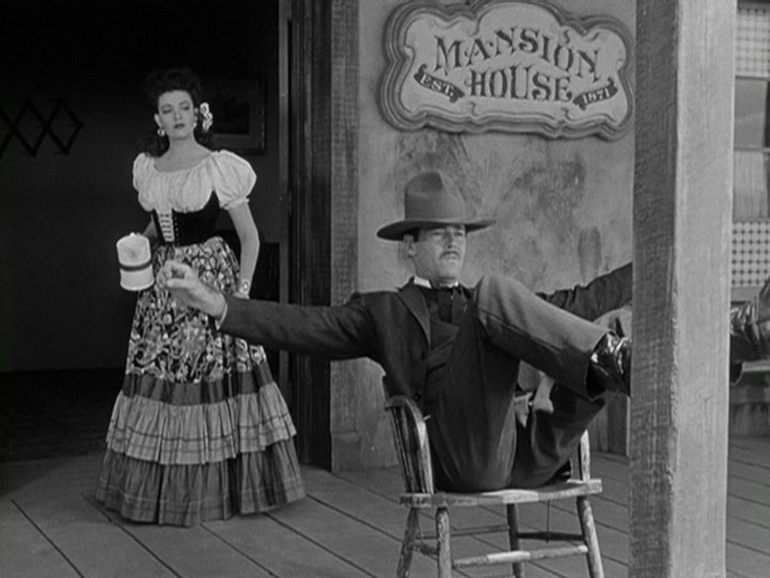
KJ: I think there are two sides to that. One of the first articles he ever wrote is this riposte to some idiotic screed by Elmer Rice, the old saw that cinema can’t be an art form because it’s a creation of mass production which leaves no room for originality, etc., etc. And Manny says that of course cinema has its boundaries and limits, just like every other art form—which is exactly where the excitement starts, when people test themselves against those limits. That’s what we’re talking about here. In this particular case, the limits of studio production and melodrama.
JPG: Yeah. Painting yourself into a corner and then getting yourself out of the corner by cliché-busting, intelligence, fleetness, a devil-may-care approach to the problem. I think that part of his love for Preston Sturges had to do with that. ‘Okay, I’ve got two heroes—the Rudy Vallee and Joel McCrea characters, plus the two women played by Claudette Colbert and Mary Astor—who are equally sympathetic, so how do I get out of that? Well, I’ll invent a set of twins and marry everybody.’ That particular case is especially nutty, but I think there’s a very strong sense of getting the moment where something could go wrong and seeing how it gets saved in an exciting way. The thing that’s interesting is that he doesn’t really analyze these things—he reproduces them at another level, and what comes out is this kind of pleasure in writing. Manny’s writing was a war machine against critical writing. You can’t read Manny without exploding with laughter at one out of two lines.
KJ: What we’re talking about here, a corollary between the writing and the films he was looking at, is that he was approaching filmmaking as an action, as opposed to the realization of a plan or a theme. Same with his writing and his painting, where it’s all about preserving the action, the movement, and never arriving at a final destination. Or, to be more precise, creating the impression of doing so. But I also want to look at the white elephant vs./and termite art question from another angle. I think he backed himself into a corner there, because that’s a very seductive position from which to operate: the little guy vs. the big powerful guy, David vs. Goliath, and so on. I think he got himself into a bit of a knot in the 70s with the pieces on Taxi Driver (Martin Scorsese, 1975), Herzog, Fassbinder. He once told Leah Ollmann that when he was a kid he would always place himself in the most advantageous spot in the classroom—near the back, with a friend, where he could casually observe the room and score points. It’s almost exactly like the way he describes John Wayne in The Man Who Shot Liberty Valance. I think that this reflexive desire to always move away from the center, as I look back on some of those pieces now, doesn’t always work out so well. In the case of the Taxi Driver piece, it has to do with a certain moralism—couching things in moral and political terms.
JPG: It’s interesting because those were the articles of the City Magazine period.
KJ: And Film Comment.
JPG: Right. Manny was at his best when he wasn’t tethered by the exigencies of responding to something new. Of course, all that early writing is in that ballpark, but he tends to get nervous or irritated having to talk about something. In some ways, these articles put him in an unnatural position…for him. What do you think he and Patricia missed in Taxi Driver?
KJ: Well, you and I were talking the other day, and we both agreed that on re-viewing, Taxi Driver is a hell of a movie.
JPG: Yes.
KJ: I used to see the movie when I read the piece. Now I don’t. At least I don’t see it as vividly as I see Only Angels Have Wings (1939)in their Hawks piece. I think they get reductive with Taxi Driver. They reduce it to a series of opportunistic moves.
JPG: Their endorsement of Marty at the moment of Mean Streets (1973)…between Delacroix’s sketches and his great paintings, Manny will always go for the sketches. There’s something in the guy that is so profoundly interested in the incipient, the beginning of a gesture, the suddenness, the eruption of it, that in some ways he resents a certain level of achievement. It’s a strange position: he’s pointing back at an energy, and he accuses the follow-up product of having lost some of it.
KJ: Pauline Kael did that, too.
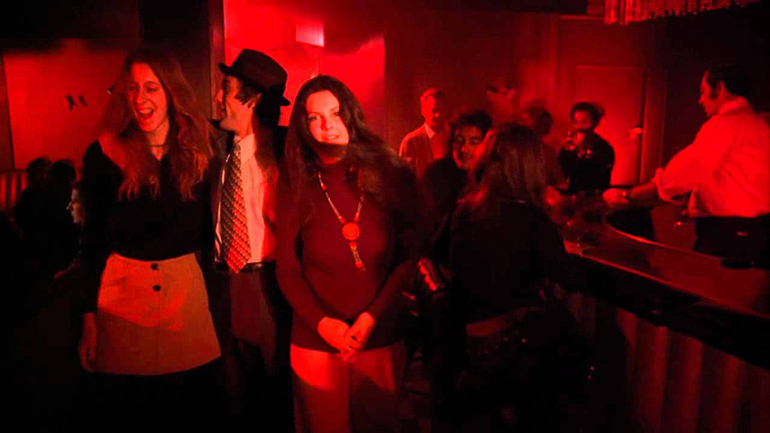
JPG: The entire path of Godard is littered with people who liked the film before the last one. (laughter) You know? ‘If you had only…’ They forgot that they had absolutely demolished the film before. “If he had only remained the one who gave us Contempt (Le mèpris, 1963) or Pierrot le fou (1965), etc., we would still love him.’ There’s a little bit of that with Manny.
KJ: It’s a sentimental thing, you know?
JPG: I think it’s the sentimentality of radicalism. There’s something romantic for Manny about going against the grain. But it’s on of the things that drove him over such a long period of time. If you look at the historical arc of Manny’s life, really, you’re talking about the American century.
KJ: I know, it’s incredible.
JPG: And as he advances, the energy is going down. Retrospectively, the 70s are a glorious period compared to the 80s or the 90s and beyond. But Manny’s always in this kind of moment of ‘couldn’t-it-be’ – couldn’t it be as radical, or more radical.
KJ: That’s it. But then, there’s so much in those later pieces that’s great.
JPG: What I love in Manny’s criticism, which really speaks to today, is his embracing of his own contradictions. First, you never know when you read his criticism if he likes or dislikes something. Riffing about something with energy is interesting to him, and efficient. He’ll suddenly turn around and say, ‘We could say the opposite’ or ‘What an idiot I am,’ and there’s this kind of absolute disdain for the idea that he should achieve a position.
KJ: Which is otherwise unheard of in film criticism, the idea of: ‘What you’re reading is the way that I feel right now, and tomorrow you might get something different, and I’m recalling my experience of the movie, my perception of it, as acutely as I can.’
JPG: Manny should have been given the title of First Deleuzian of France – rhizomatic writing, rhizomatic painting, a premium put on energy at all costs, a refusal of the territoriality of genres. And there is not one piece of criticism by Manny, after a certain point, in which there’s even a smidgen of a re-telling of the tale. He’s the only critic I know of who doesn’t, in one way or another, pay homage to the synopsis.
KJ: Because he assumes that you know it already.
JPG: Yeah – ‘I’m not going to bother with that, I’m going to tell you how it riffs, if you’re interested in the music of the film you should check it out – maybe you won’t hear it, but this is what I hear.’
KJ: I’m also amazed by…when he’s writing about the ‘dead air’ in…what is it, Thunderball (Terence Young, 1965)? When he writes that the dead air in Thunderball is like the dead air in a Richard Lester movie. That has nothing to do with any kind of value judgment, it doesn’t really have to do with aesthetics. Rather, he’s catching something, which is: a habitually practiced special effect of that moment—in this case, the sodium vapor process—which has its own poetic frisson, intended or not. On another level, the way that filmmakers of the early 30s kept returning to the same settings and styles of living – the tenements, the little apartments, the staircases. In other words, what the film catches of the time, which is also in the body language, the style of dress. So he’s charting the terrain of how people want to, or are in the habit of, seeing themselves and their common life pictured on a movie screen. It’s unlike anything that anyone else was doing, including Barbara Deming with her sociological studies.
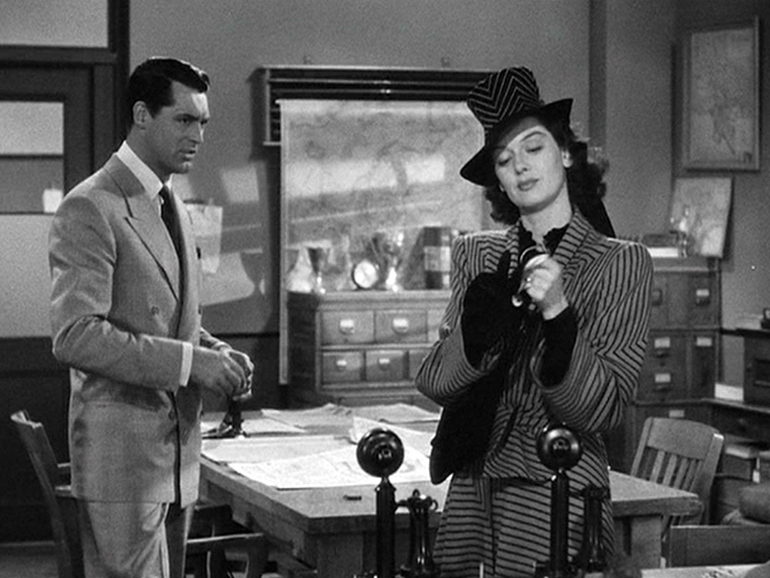
JPG: He’s the only critic I know who talked to such a great extent about set design, environments, planes of space. His love of things outside American cinema is based on that - his nailing of Ozu, for instance. And then there’s this extraordinary emphasis on an area into which very few film critics want to wander, which is: what is an actor? Not as an expression of the shimmering depth of the human soul, but what does an actor effectuate in the constitution of a narrative? And the relationship between the description of set design and the way in which bodies function, and what it gives you of the DNA, the flavor, the political valence of the time – that’s Manny. For that reason, he is quite at ease in the 30s. That’s his terrain. His great classes on the 30s were based on his extraordinary perception of that era – the contradictions and the complexities of the time.
KJ: When it comes to acting, many film critics proudly throw up their hands and say, ‘I don’t know anything about acting, all I care about is mise-en-scène.’ Meaning: cinema is not about acting and any real director could make a great film out of the phone book and use Play-Doh figurines just as well as actors, one of whom is as good as another. On the other hand, you get people who are claiming that they’re talking about acting when what they’re really talking about is iconography. Or, and this is extremely common, a lot of people talk about acting as if it’s over here while the movie itself is way over there, an ocean away. With Manny, it’s all integrated.
JPG: When he talks and writes about actors, he’s like Daumier. He’s a thumbnail sketch artist who picks up a line that defines a type. He talked about the extraordinary stuff that the American actor produced for a very long time, which was tied to underplaying. On that level, he’s a great cineaste. This is one of the things that’s completely missing from criticism right now, and it’s missing because it’s not in the movies. There’s this kind of massive centralization of the figure: you’re looking at people at a unique distance, and they occupy the center of the screen, and the screen is this kind of matrix of distortions. You don’t see the body of the actor as you saw them in the films of the 30s. I remember him telling me that he trained himself as a young man at pulling off a Spencer Tracy before the mirror.
KJ: He wanted to be an actor. That was a real ambition of his when he was younger.
JPG: You could see that, and he put a lot of energy into his gestures.
KJ: Anyone who knew him will remember him sitting at the table in his black workshirt—either the t-shirt with the pocket or the black buttoned-down shirt—and he would have his wrist resting on the table and his fingers poised, and as he talked he’d use his fingers for gestures, to emphasize a point or counterpoint something that someone else was saying, to mesmerizing effect.
JPG: Yeah, that was stuff that he picked up from people like Cary Grant. Manny was capable of being angular in the most extraordinary way. He brought it into a profound comprehension of the mechanisms of filmmaking.
KJ: There was also the hand-behind-the-head gesture, the worrying…
JPG: The hand on top of the head saying ‘Brutal…,’ the way the head cocked, the way he’d poke the air…
KJ: That’s right – the emphatic gestures.
JPG: Yeah. And he was tall – not as tall as you, but compared to me, a midget of French extraction, he was a tall guy. That stuff is so completely original. And for someone who makes films, it is absolutely and completely and endlessly practical. It’s very different from the writing at Cahiers during the grand period, where what you were given was the philosophical substratum of the filmmaking gesture. Filmmaking was redeemed with grand metaphysical pomp and circumstance. In comparison, Manny is a fucking mechanic. I showed him my films. The twins film, Poto and Cabengo (1979), wouldn’t have been what it is without him. He would come religiously and look at it, over and over, and one day he said to me, ‘Wouldn’t it be great if it was like a ribbon?’ I mean…what? But my relationship with him was such that I said, ‘Okay, we’re gonna go with that. ‘ So the letters start running at the bottom of the frame, like you were on Times Square looking at the electronic ticker-tape. He had this kind of practicality. There’s something that you get in the writing that you never get from anyone else. All the writing of the critics now is, in one fashion or another, addled by an antiquated idea of narrative—synopsis-bound, marred by adjectives…
KJ: And adverbs…
JPG: And adverbs, to the nth degree. With Manny’s writing, it’s all about energy. It’s feral.
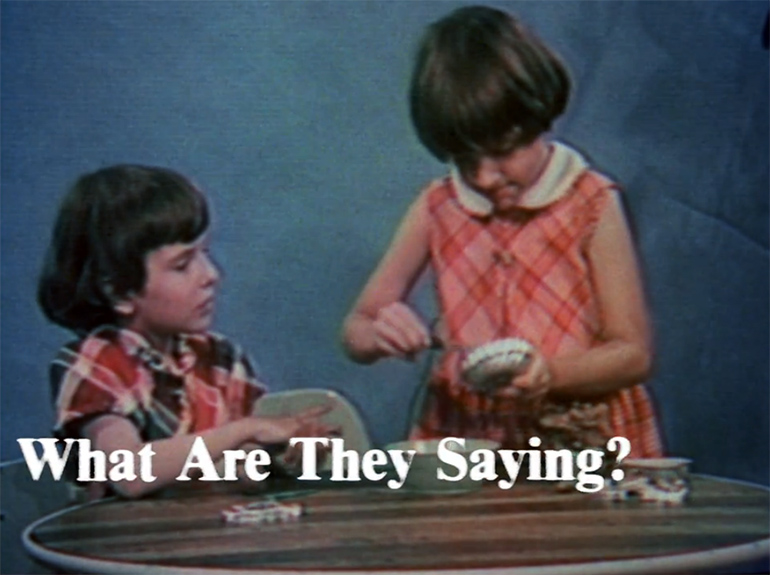
KJ: In that City piece on new American cinema, when he and Patricia are talking about Badlands (Terrence Malick, 1973) and Mean Streets, and they say that the directors of the 70s are ‘impatient Prousts’ who were formed in the 50s, the drabbest era in the history of mankind where the big color was charcoal grey…who else figured that out? Or the fact that the scenes in De Niro’s room in Taxi Driver were made by people who know what it’s like to be poor…no one else was even getting into that area of the movie. Everything else was about the neon, the film noir nightmare, Vietnam, Marty’s and De Niro’s virtuosity, etc.
JPG: It’s the same with what they wrote on Bresson. They understood Bresson’s immediacy and centralness and ability to make something present.
KJ: The bartender in Mouchette (1967) pinning up her apron…
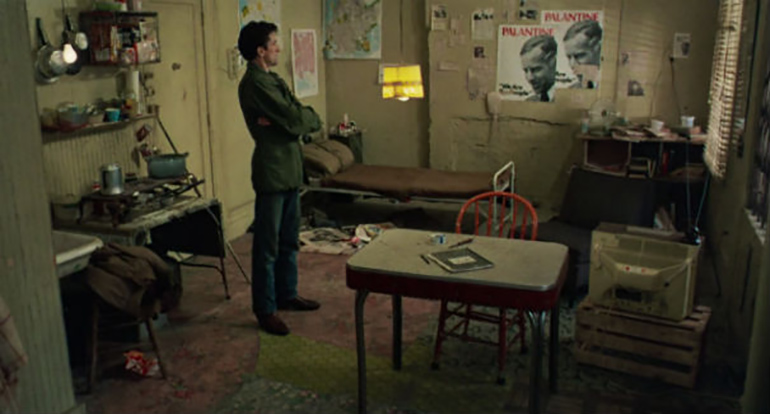
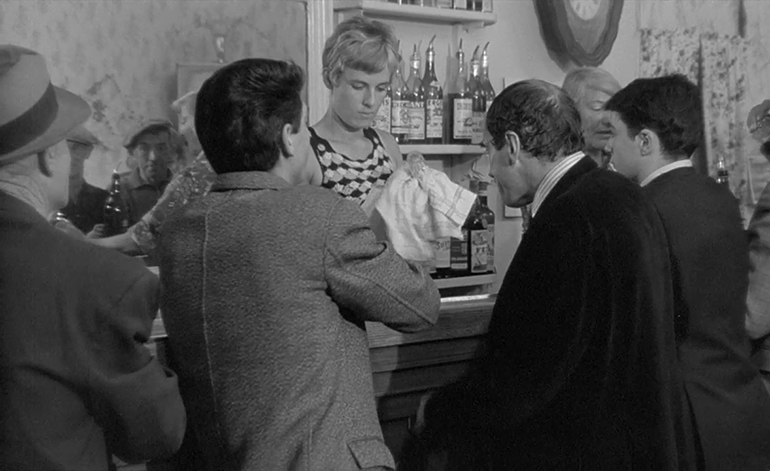
Bottom: Mouchette (Robert Bresson, 1967)
JPG: Or lining up five empty bowls and pouring out the coffee for every member of her wretched family, every day. It’s a type of writing that’s obsessed with the décor, the environment, the fashion, all as signs of a historical DNA. And it’s obsessed with the small. The problem is that when he says “vs.,” he negates the productive role of the big in the creation of the small. He makes people believe something that he really didn’t believe himself. That’s why he hated that article.
KJ: And that’s why it’s so great that Robert Polito put together the collected film writings. Negative Space is Manny refracted through a particular era. When you look at the whole span of the writing, you see something quite different, less worried about being hip. For instance, his initial reaction to The Best Years of Our Lives (William Wyler, 1946), where he’s extremely moved by the film and zeroing in on the rightness of the décor and Frederic March’s depiction of middle class dissatisfaction. Later, he takes up the Warshow line on the film – “a horse-drawn carriage load of liberal schmaltz.” That’s the kind of thing that got him singularized and tagged in the Times obit as the naysayer who deflated Kazan and George Stevens and Orson Welles. Meanwhile, I can’t even count the number of times I heard, from so many people, ‘Why didn’t Manny like Welles? What did he have against him?” The fact that he devoted about three or four pages to Touch of Evil (1958) in the introduction to Negative Space is forgotten. There’s only, “He panned The Magnificent Ambersons (1942).’ But the point is that sometimes he’s coming at someone or something from a negative viewpoint and sometimes it’s positive, but almost all the time, no matter how he’s slicing into it, he arrives at something other than a value judgment. In the review of Ambersons, after he’s dismissed it, he suddenly turns on a dime and talks about the psychological acuity of the movie, the fact that no one else but Welles was going there. Same with his pan of Rio Bravo (1958) – it ends with this beautiful evocation of Hawks’s sense of fluid movement with actors.
JPG: Yeah, what interests me is: you think you’re headed towards some all-encompassing judgment, and then you suddenly get something that hits the object in question from a completely different angle.
KJ: Yeah – you think you’re on a train ride with a one-way ticket and suddenly you find yourself in a prop plane getting an aerial view.
JPG: A lot of that is also in his painting. This kind of complete shift in perspective and directions of look within the same painting or the same object.
KJ: In fact, everything in the composition seems to have its own perspective.
JPG: His writing reads like that, a kind of tabletop with all different kinds of objects seen from very different perspectives. At the end, the idea isn’t to nail down a film critically, but to multiply, to say: ‘This is great because there are at least that many entrances into it and exits from it.’ And, always implicit: ‘I’m sure if I went at it again tomorrow I’d find more.’ There’s a recognition that great work has a kind of plurality.
KJ: Yeah. Saying that the writing is anti-conclusive in an interview is one thing. The actual fact of the writing is something else again. Really, you can’t even pin it down by calling it anti-conclusive. It’s all about the action and the practice of writing.
JPG: I think that something happened in his reading of cinema that had an effect on his painting practice.
KJ: And visa-versa.
JPG: And visa-versa. There’s an idea that it’s not right to think of an image as a celibate construct: all images are plural.
KJ: Right – no image exists on its own, every image exists in relation to other images.
JPG: Right, and they’re plural in and of themselves. Their valence, their nexus of paths…you can look at them, and you can create conversations. He’s a great conversationalist in his painting—one thing is always responding to another. I think it’s the same with his approach to film. I mean, he’s an essayist. He’s a very peculiar kind of critic. It’s funny. There’s a kind of position paper aspect to his criticism. There’s the destruction of any position, and at the same time there’s a concern with formulating not an aesthetic theory, but a larger aesthetic concern. That’s very rare, and that’s why when he’s talking about a film he can talk at the same time about a painting or a piece of writing in a newspaper or a novel. With other critics, it’s a straight highway to signification, importance, whatever. Manny is a guy who puts a big black hole at the center of his criticism. There’s something in there that has so much concentrated energy that you have to spin away from it to be able to approach it, to construct a metaphor that allows you to begin to speak about it.
KJ: It’s the idea that pinning something down and arriving at a final judgment is a violation of the work. It’s a violation of what art is. On the other hand you could say that in the act of writing you have to settle on some kind of final form and judgment because that’s life, right? That’s consciousness. It’s the same in painting. But this pressure to arrive at a definitive ranking in film criticism, the nervousness and anxiety…it’s as if the writer were taking an SAT test in high school in 1967. You know, beat the clock. ‘What’s my interpretation? I’ve gotta get my points made! I’ve gotta get my position on this film figured out before the proctor comes and takes my paper and pencil away from me!’ There’s an authoritarianism looming over a lot of writing, including that of certain critics who write for certain supposedly major publications.
JPG: At the same time, with Manny, there’s this extraordinary revindication of his authorial status. He’s imposing his gesture, it’s unique. Again—he’s a writer.
KJ: Have you read that 2nd piece with the title Nearer My Agee to Thee? The first one is in Negative Space, but Nearer My Agee Mach II is really poignant and incredibly bitter. It’s an attack on Andrew Sarris and Susan Sontag, and he’s saying that they’ve come along and turned film criticism into a matter of showboating, categorizing, ranking, with only a roughly approximate relationship to the movie in question, and that in the process they’ve marginalized the 40s critics by claiming that they were too high-minded and sociologically oriented. By 40s critics, he means Agee, Warshow, Ferguson and, implicitly, himself. The 40s critic was panning and sifting for truths about the American male that were to be found in the movies—March in Best Years, for instance—and he says that the panning and sifting, which relates to the life outside the movie and the documentary aspect of cinema, has been sidelined and displaced by this aggressive categorizing and ranking. Everything he and his friends and comrades stood for has been trashed and forgotten. That’s interesting to me. It gets back to the DNA question. What does the movie catch? What of ourselves does it give back to us, that we’re not able to name? I remember when he and I were walking through the museum looking at his retrospective on the last day—I’ve told this story many times now—and he said, ‘I try to get myself out of it as much as possible so that the object itself takes on a kind of religious awe.’ It’s the same with the writing.
JPG: Because of his reading of energies, he’s able to pass on the genres in fashion and he’s more favorable to the lowbrow, the experimental stuff, the European stuff. His paper on Godard is amazing, this idea of going at it as if it was Godard’s bestiary, starting with an intuition that Godard’s aesthetic is on the one hand Matisse, and on the other hand has the effect of beautiful butterflies pinned against a monochrome background. Nobody in France would have dared to do such a thing.
KJ: It didn’t seem to occur to anyone else in America, either.
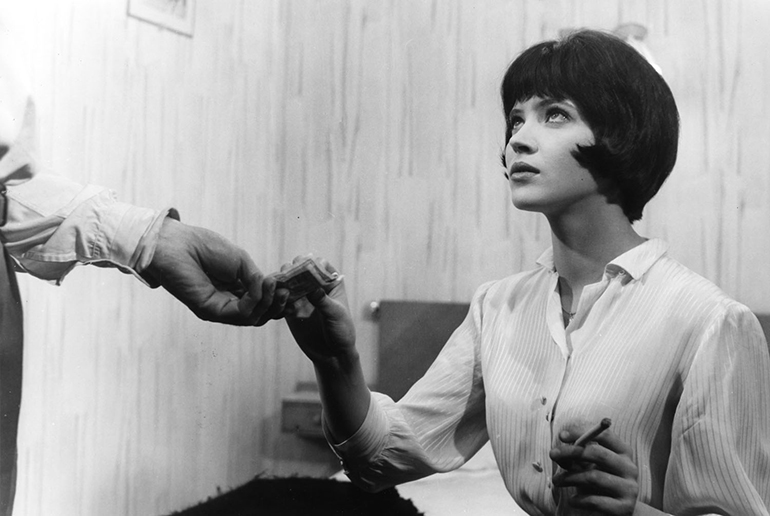
JPG: You read other critics and there’s a lot of ego. With Manny, it’s the Id at work.
KJ: Well, there’s ego alright, but it’s ego manifested in an unusual manner. Sontag is saying, in so many words, over and over again, ‘Don’t pay attention to this, pay attention to that because that’s where art is at right now, and if you want to be on top of what’s happening in culture you need to see Einstein on the Beach.’ With Manny, it’s the ego of the artist. That’s something else.
JPG: Yeah, and it’s a series of operations that gets the Id of the moment to express itself. If Manny was persuaded of anything, it was that America is not a road movie, it’s a garage sale. The imagination of the garage sale animates Manny in his writing and in his painting. You know, ‘It’s been used, we’re selling it again, I’ll give it to you for a dollar.’ (laughter)
KJ: True – nothing on a silver platter or gilt-framed. Remember what Jonathan Crary said at the tribute you organized? He said that Manny’s paintings evoked the spectre, the looming possibility, of small-scale ruin, which is of course linked to growing up during the depression. But he finished by saying that all that stuff, the crowded tapletop of objects, the disorder, suggested the possibility of ‘other and perhaps better worlds.’ I’ll buy that.
JPG: You know, the title Routine Pleasures (1986) comes from Jonathan Crary. He gave it to me.
KJ: Really?
JPG: Yeah. And it’s completely in line with Manny. On the one hand, there’s the baseline of the job and its rituals, and then there are the little sidesteps that you put in, this energy, so that you don’t bore yourself to death.
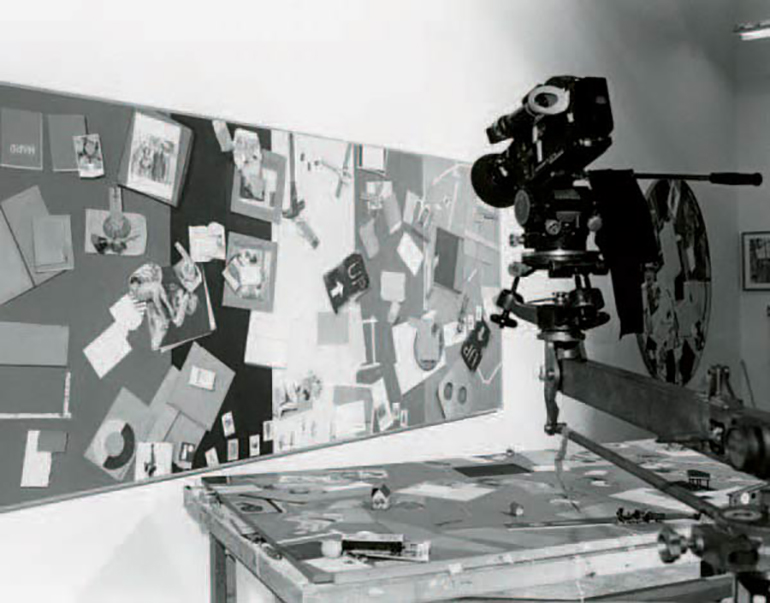
KJ: That’s the part that certain admirers of Manny’s miss completely.
JPG: Completely. They don’t know that. He was very good in his painting and in his writing at procedure: setting up a terrain, and then a procedure that allowed him to work within that terrain.
KJ: That’s why he always wanted to be working with somebody, bouncing off of you, Patricia, Willy Poster.
JPG: Another guy who does that is Raymond Carver. There’s a kind of Carver short story aspect to Manny’s stuff. He’s not necessarily interested in the little man, but in people who find themselves in situations where they have to work, to earn their keep. In the films of the 30s, for instance, he’s looking at people who were defined by work.
KJ: ‘I am my job.’ That’s one of the 30s notes.
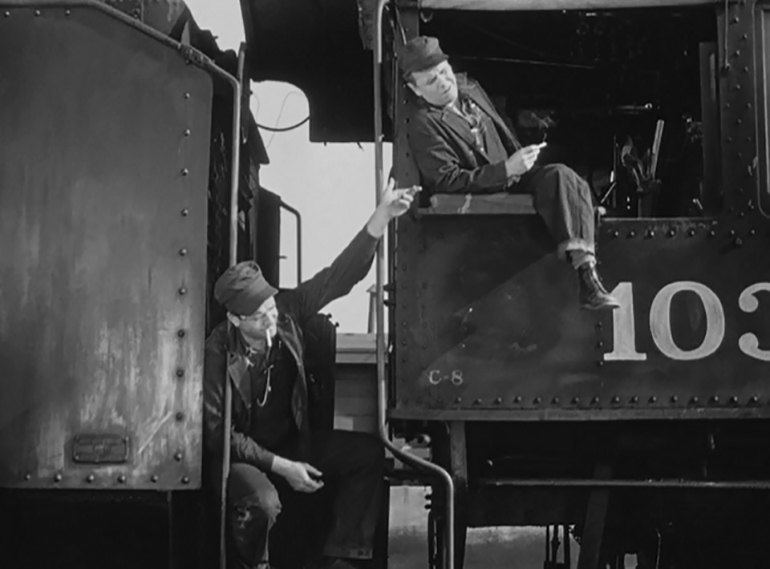
JPG: And the job defines the guy, which means that the job has to be described, and the job engages a world, whether it’s the world of the train engineers in Other Men’s Women (William A.Wellman, 1931) or the airport guys in Only Angels Have Wings. And in a way, he was kind of at a loss to understand a cinema where the idea of the job had disappeared.
KJ: I think you’re right. But it’s not so much the job that disappeared from movies as the importance of the job. It kind of went away.
JPG: People exist and the film unfurls itself in a space of leisure, even if that leisure is anguished. But you don’t see much of how that leisure is won.
KJ: The implication being that jobs are just a distraction from what’s really important in existence.
JPG: Right. And that’s a huge inversion for him, who saw America as this land of working stiffs. And he has something else: a profound sense of the necessary stylistic revindication of poverty. The way people dress, the necessity of affirming a stylistic distinction. Not something coming from the outside. It’s the aesthetic individuality of the gesture, and the gesture is the relationship of the hand to the suit that wraps the wrist.
KJ: That’s one of the things that’s so bittersweet and beautiful about the notes on the 30s. He’s saying, ‘In the 30s, it’s all about covering ground’ – Russell Lee photographs, the beginning of The Sound and the Fury, Toni (Jean Renoir, 1934), Other Men’s Women. And within that ground covered, it was ‘My body right or wrong,’ and ‘I am my job and my job is me.’ There’s the Dick Tracy style of visualization of action, as in Night Nurse. There’s the drinking – it’s a hard-drinking era. There’s the fact that everyone is in loose-fitting clothes, very comfortable, and you have George Bancroft in Blood Money (Rowland Brown, 1933) looking like a turnip, Toni looking like a dumpling, a pudgy Spencer Tracy in Man’s Castle (Frank Borzage, 1933), and they all think of themselves as gods.
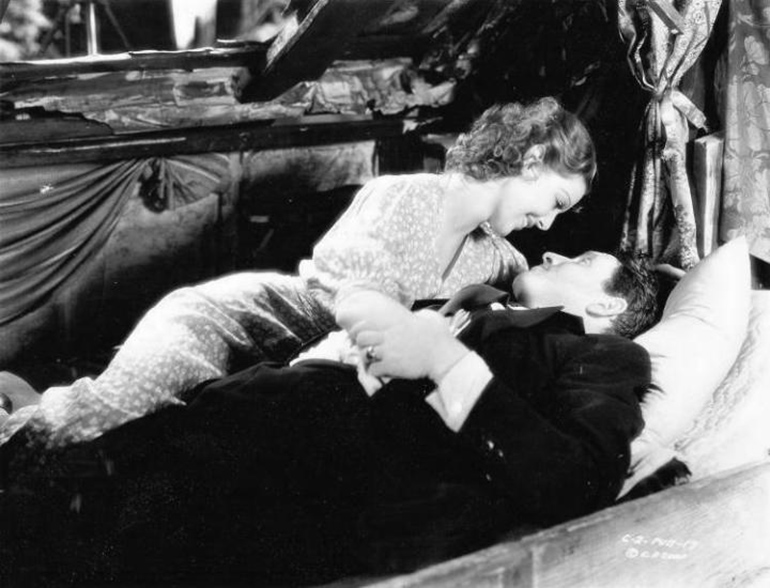
And all this kind of lays the groundwork for, where he’s concerned, things going sour and pinched and tightened in the 40s. On the one hand, evil and distrust creeping in around the edges of Rules of the Game (La règle du jeu, Jean Renoir, 1939), or Christmas in July (Preston Sturges, 1940) or Midnight (Mitchell Leisen, 1939). And then—and this relates back to your point about the gesture—there’s the clothing. Suddenly, everyone is corseted, the women are dressed in clothes that make them look like they’re armored, everyone is evened out, cosmeticized, looking like they all have the same body. So in a way, what he’s doing is saying goodbye to his own era. He’s describing how it went away, dissolved.
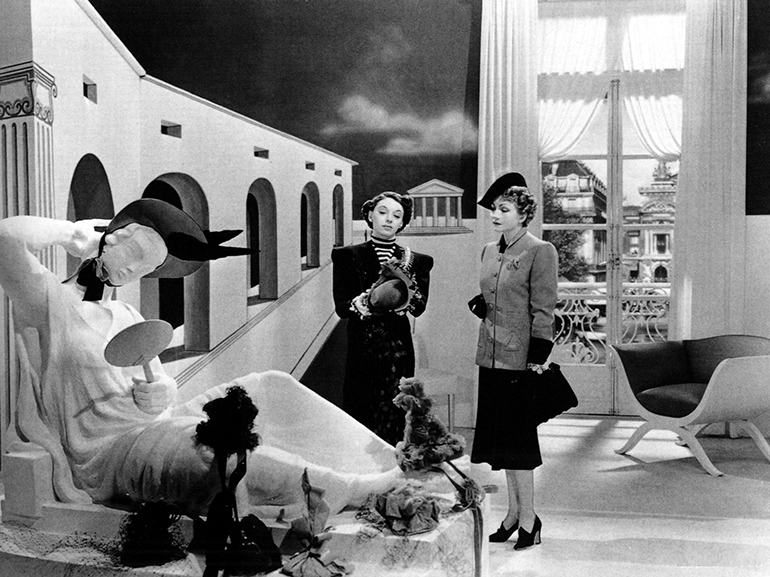
JPG: Or how it standardized itself, how the industry dictates. Manny really wasn’t someone who was apt to write about erotic moments, but that’s what he’s doing when he’s talking about the bodies of the 30s—their distinctions, their differences, what forms the attraction of one sex to the other, through the differences as opposed to the conformity. So…all that. I guess the question isn’t what can Manny’s criticism do for today but what did it describe.
KJ: To my eyes, right now, his writing looks like…writing. Not criticism, but writing. You can say that of very few film critics. You can say it of Bazin and Godard, but they were very different as writers.
JPG: It’s writing but it’s also a kind of…it’s not nostalgia, but a shaping of what the movies have left of the world. You get the sense that Manny’s a climber finding all kinds of nooks and crannies so that he’s able to hoist himself toward the summit: the now of the moment of the generation of the movie or the painting or the book in question, which is somewhat gone.
KJ: He’s charting how the world changed and how he changed in relation to the world. Me, I don’t feel as at home in this moment as I did in the 70s, because I was born in 1960 and that’s the nature of what it is to be human. When I read Deleuze’s history of cinema, I thought, ‘Manny did the same thing’—I mean the break between the movement-image and the time-image—’only he did it in real time, review by review.’ When you read The Gimp or Blame the Audience or Ugly Spotting, those pieces from the late 40s and early 50s, you could say they’re negative, but on another more important level he was describing and charting what he was seeing. He has to do the work from the standpoint of being against it all, but he’s registering a shift in syntax, and in the relationship between the human figure and the emotions being represented.
JPG: He’s a very good mapper, seismographer. You know, I’m not sure anybody else could write like Manny.
KJ: Well, some people have tried. Not advisable. It’s him, it’s not a how-to manual.
JPG: No, it’s not. It’s a kind of writing that absolutely induces re-readings. And in those re-readings, you always find something strangely different.
KJ: How many film critics can you say that about?
JPG: You can’t. And in a way it’s like his paintings. They’re like strange pinball machine systems and you can’t get out.
KJ: When I think of his paintings, I always think of Ingenious Zeus, one of the later ones. During that time, Patricia would choose the background color, in this case a vibrant blue, and then he’d take plants from her garden and lay them out on the table and take out his paint knife and do his thing. So in that one, you have this visual pattern that looks like the eye of a hurricane. But when you try to track it with your eye and pin down the definitive visual form, you can’t. It doesn’t work. Your eye is drawn in that direction, that’s the rhythm, but whenever you try to follow it all the way, complete it, you wind up where you started.
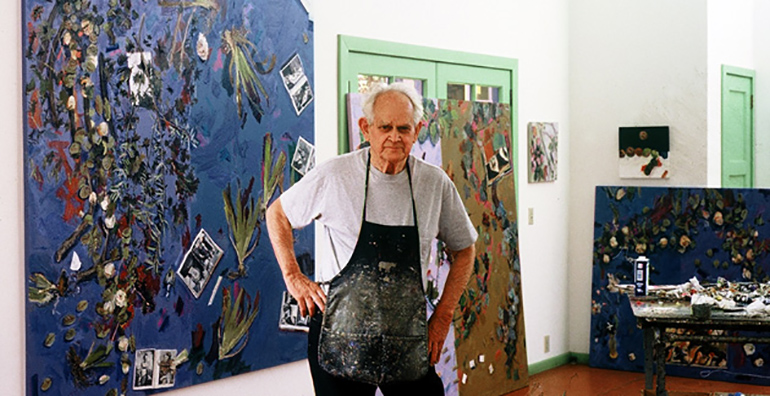
JPG: As long as we’re talking jobs, reading his texts is an amazing pedagogical experience for students. They’ve read so much writing that gets right on the highway and goes in one direction and kind of includes its own Cliff Notes, and suddenly they’re reading this guy who cannot be synopsized, this guy who tells them: ‘I’m all about method, and you’re gonna have to find another kind of discourse to talk about me.’
KJ: Yeah. It does leave him peculiarly unable to cope with the alleged ‘white elephant’ part of film, meaning narrative, theme, aesthetic ambition. That’s his particular limit. Everybody has one. He once wrote that all art forms have their limit points, and by the same token so do artists. Temperamentally, he couldn’t go there.
JPG: It makes me think…Jean-Luc used to tell me all the time, ‘You’re obsessed with production, and you don’t know anything about the importance of distribution.’ I think Manny’s like that in some way. There was all his life a kind of bitterness or rage about not having been recognized for what he was and what he had brought.
KJ: That’s true. To the point where it was comical. To him.
JPG: Yeah, to him. And yet he was absolutely and radically incapable of doing the gesture that would have…you know, paid the tribute to the white elephant that would have enabled people to see the termite. As he once said, ‘There’s not one gallery I didn’t close.’
KJ: Yeah, but then the world of galleries is so fucking brutal.
JPG: So’s the world of film criticism.
KJ: Maybe, but on a much smaller scale. I was listening to the radio this morning, and Jeff Koons was on. He’s closing down the Whitney before the move downtown, and he just sold his inflatable puppy for $54 million. But really, the commentator said, Jeff is basically a down-to-earth guy, and he always shakes everyone’s hand. What does that kind of thing have to do with Manny’s painting? It reminds me of the time that Richard Price introduced Manny to Julian Schnabel, who tried to give Manny a few pointers. He told Schnabel to fuck off. Like, ‘Where do you get off telling me how to paint?’ They’re from two different planets.
JPG: Well…we both miss him, tremendously.
KJ: It’s been six years, right?
JPG: It’s been six years. He’s as uncategorizable today, for me, as he was then. I know that if I hadn’t met him, I wouldn’t have stayed where I stayed for so long. He had a very, very profound effect on the way I film, the way I write, the way I think. Of course, it also put me in a situation where, instead of doing a hundred films, I’ve done, maybe, two and a half. The stuff you’ve tackled, which is kind of difficult, is the notes. The notes are really Manny in the cauldron. They’re both visually and intellectually…it’s impossible to organize them into an acceptable continuity. And yet, you see the amount of work, the amount of care, you see the surprising connections, you see the rewriting, the scratches, the spaces between things. You see the classes. They were fantastic. In the classroom, there was a kind of two-bit magician quality about him. The slides that weren’t quite right, putting up a reel and running it backwards, bringing the last reel of The Line-Up (1958) by Don Siegel into the middle of a Michael Snow movie, and then bringing it into the middle of a Bresson movie—this kind of mish-mash, nothing proper, nothing ordained.

Right: Wavelenght (Michael Snow, 1967)
KJ: And he ruined several dozen reels of film in the process.
JPG: I remember lending him a whole box set of Mingus, and after two or three months I said, ‘Manny, I’d kind of like to get those CDs back.’ So he brings back the Mingus completely spattered with paint. I looked at them and said, ‘Can I frame these?’ But you know, the writing has a kind of magma feeling to it.
KJ: The notes or the writing?
JPG: Both. With the notes, first you have to learn how to decipher them. It’s like the Rosetta Stone.
KJ: You’ve got to figure out the handwriting. If you’ve read enough of his writing then you know where he’s at and what direction he’s probably going.
JPG: Yeah, he’s always playing Chinese checkers. He’s always writing one word and then you understand that it links to that other word. He always told me, ‘You write, you do the first thing, and then you add words because they’re good sounding.’ But it’s not just that. It’s very much the way a carpenter works.
KJ: Yeah, because there are sometimes repetitions in the prose, ‘mistakes’ as he called them, but it doesn’t matter because it’s so tautly constructed. You know, if you look closely at any film, any work of art, you’re going to start getting into the imperfections, and the imperfections are going to reveal themselves as actions, and the actions are going to reveal themselves as responses to the moment of making art, making sense of the world, doing something. You know, you pick up your paint knife and your hand’s going to be magnetized by the board, and you’re going to wind up doing something immediate with it. If you look closely enough at anything, it’s always going to be imperfect and it’s always going to be exciting. There’s the Emersonian side of it, which is that any work of art is going to fall short and exist in the shadow of what it’s trying to reproduce in nature. But Manny completes the thought by insisting on the reality of the action itself and the artist. Of course, he’s not alone, but it’s so excitingly embodied in his writing and his painting.
JPG: He’s pointing out the fact that there’s the practice, and there’s the work, which gels as work for reasons that are both internal and external. Somebody calls you and says, ‘Mr. Jones, we need 2000 words by tomorrow.’ There are the elements that internally make that stuff gel, but the important thing is the practice, which is far more scattered and rhizomatic. And I think that the modernity and the contemporaneity of Manny is just that: the idea of the primacy of the practice. It’s the artist in his studio as opposed to the construction of the Parthenon. So the notes are extraordinary, not because they’re notes, secondary artifacts, but because of their embodiment of a note-taking imagination at work. Instead of selling it to Stanford for six figures and locking it away in an archive for scholars to consult, he puts it all out there, like the Pompidou with the infrastructure on the outside. Whatever happened, whether he would be celebrated or not—and God knows, he wanted to be celebrated—he would never stop. He was always taking notes. I remember in the last weeks of his life, he wasn’t painting anymore but he was in the garden, doing this series of drawings that looked like Anthony Mann compositions.
KJ: With the paint pens…
JPG: Yeah. It’s the idea of the imagination and the aesthetic of note-taking.
KJ: If he were around now, reacting to what’s happening… I mean, forget about the art world. But in film, what Coppola predicted has pretty much come to pass: the tools of filmmaking have more or less become as affordable as canvas and brushes and paints or notebook and pen. The exceptions are production design and the time question. Otherwise, it’s happened. But of course, the downside is that it’s led to a lot of instant moviemaking. It reminds me of what Manny wrote about Pollock in the 40s – ‘Look ma, no hands!’ Now, everywhere you go, you meet people who say, ‘Oh yeah, I’ve made a film. I’ll send you a link.’ And you watch it and it turns out that they haven’t made a film, they’ve assembled some images and sounds into some kind of acceptable pattern. It reminds me of the story that Marty told me about the Dalai Lama speaking in LA. He took questions and someone raised his hand and asked, ‘What’s the quickest way to enlightenment?’ The Dalai Lama was silent, and then tears came to his eyes and he walked off the stage. That about sums it up. If Manny were still around, he’d be focused on the illusion of the short cut. More likely, though, he’d be thinking about something that neither you nor I could predict. He always surprised me.
JPG: He was always extremely current. He kept himself abreast in one fashion or another.
KJ: Right. And the default position was: I’m against it. But we all have default settings, really. And beyond that was where the real thought began.
JPG: You’re right about the default setting. But it wasn’t so much ‘I’m against it’ as ‘I beg to differ.’ There was a lot of the boxer in him. If you threw a punch, he’d hit back in a way that you never anticipated, and land in a place where you never thought you could be countered.
KJ: It’s funny, because I’ve been thinking a lot about just that: how much do you need that to think, to exist? How much do you need to have something to react against?
JPG: I think it’s the law of the frame. You’ve gotta bounce off the edge of it.
ABSTRACT
In this conversation, Jean Pierre Gorin and Kent Jones evoke and comment on the working methods and some of the main ideas of Manny Farber’s work, in contrast with the usual methods of film criticism: Farber’s writing accepts its own contradiction, staying away from categorization and aggressive classification, avoiding to depart form the synopsis. Farber searched for the DNA of his time in the movies, he conceived the cinematographic work as action, the images as plural, to focus most of his observations on the body of the actor, the set or the musicality of the film.
KEYWORDS
Cinematographic work, style and function of the writing, ADN of the time, the body of the actor, American critical thinking, James Agee, plurality of the images, creative procedures, painting.
BIBLIOGRAPHY
AMOS, Patrick & GORIN, Jean-Pierre (1985). The Farber Machine. Manny Farber. Los Angeles. The Museum of Contemporary Art. Exhibition Catalogue. November 12, 1985 - February 9, 1986; Art in America 74, nº 4 (April 1986), pp. 176-85, 207. http://www.rouge.com.au/12/farber_amos_gorin.html
FARBER, Manny (1998). Negative Space. Manny Farber on the Movies. Expanded Edition. New York. Da Capo Press.
FARBER, Manny (2009). Farber on Film. The Complete Film Writings of Manny Farber. POLITO, Robert (Ed.). New York. The Library of America.
JEAN-PIERRE GORIN
He is Professor Emeritus in the UC San Diego Department of Visual Arts. He made in Southern California three essays films: Poto and Cabengo (1978), Routine Pleasures, 1986 (Best Experimental Documentary Award, Festival dei Popoli, Florence, Italy, 1986); and My Crasy Life (1991) (Special Jury Prize, Sundance Film Festival, 1992). From 1968 to 1973 he collaborated with Jean-Luc Godard in the Dziga Vertov Group. Together they directed Vent d’Est (1969), Luttes en Italie (1970), Vladimir et Rosa (1970), Tout va bien (1972) and Letter to Jane: An Investigation About a Still (1972). http://visarts.ucsd.edu/faculty/jean-pierre-gorin
KENT JONES
Director of the New York Film Festival. Deputy Editor of Film Comment. His writing on film has been published throughout the world in numerous magazines, newspapers, catalogues, websites and journals (The New York Times, Cahiers du Cinéma, Sight&Sound, The Village Voice, Cinema Scope). In 2007 a collection of his writings, Physical Evidence, was published by Wesleyan University Press. He is a 2012 Guggenheim Fellow. Jones has collaborated for many years on documentaries with Martin Scorsese, beginning with My Voyage to Italy (2001) on which he served as co-writer. He and Scorsese co-wrote and co-directed A Letter to Elia (2010).
Nº 4 MANNY FARBER: SYSTEMS OF MOVEMENT
Editorial
Gonzalo de Lucas
FILMS UNDER DISCUSSION. INTERVIEW
The Law of the Frame
Jean-Pierre Gorin & Kent Jones
DOCUMENTS. 4 ARTICLES BY FARBER
The Gimp
Manny Farber
Ozu's Films
Manny Farber
Rainer Werner Fassbinder
Manny Farber & Patricia Patterson
Nearer My Agee to Thee (1965)
Manny Farber
DOCUMENTS. INTRODUCTIONS TO MANNY FARBER
Introduction to 'White Elephant Art vs. Termite Art and Other Writings on Film'
José Luis Guarner
Termite Makes Right. The Subterranean Criticism of Manny Farber
Jim Hoberman
Preface to 'Negative Space'
Robert Walsh
Other Roads, Other Tracks
Robert Polito
The Filmic Space According to Farber
Patrice Rollet
ARTICLES
Hybrid: Our Lives Together
Robert Walsh
The Dramaturgy of Presence
Albert Serra
The Kind Liar. Some Issues Around Film Criticism Based on the Case Farber/Agee/Schefer
Murielle Joudet
The Termites of Farber: The Image on the Limits of the Craft
Carolina Sourdis
Popcorn and Godard: The Film Criticism of Manny Farber
Andrew Dickos
REVIEW
Coral Cruz. Imágenes narradas. Cómo hacer visible lo invisible en un guión de cine.
Clara Roquet

